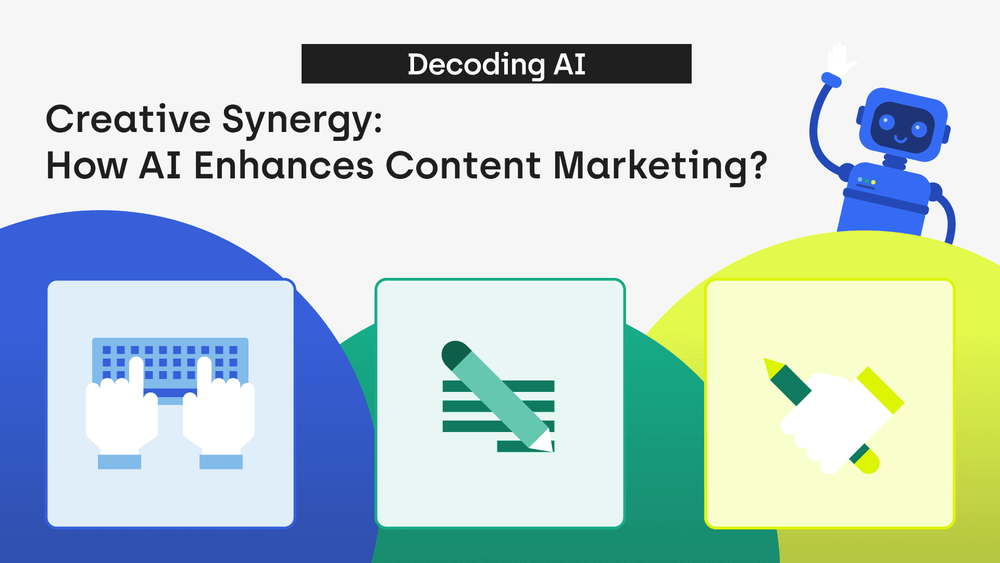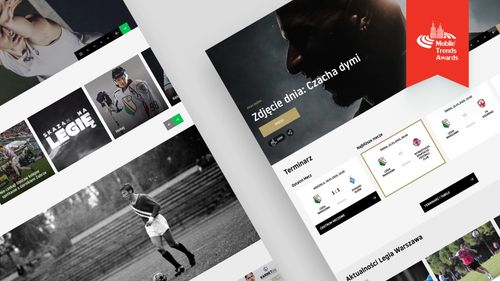Creative Synergy: How AI Enhances Content Marketing
Joachim Stelmach

In the dynamic world of Content Marketing, staying ahead of the curve is not just about adopting new technologies but also about understanding and applying them effectively. As part of our “Decoding AI” series at hero/dot, we are thrilled to share insights into how AI is redefining the landscape of content marketing.
This article is part of the Decoding AI series by hero/dot, which focuses on showcasing the practical aspects of Artificial Intelligence and its impact on the future of business and IT. Decoding AI stems from our commitment to keeping up with the latest technological advancements. In monthly internal workshops, our team members share their experiences with different aspects of using AI in their daily work. We then condense that knowledge into helpful articles to share with you on our blog.
In this article, we're diving into six key ways AI is changing content marketing:
- AI in Content Creation: How AI is changing the way we make content.
- Content Personalisation with AI: Using AI to better match content with different audiences.
- AI in Graphic Design: AI's role in improving visual content.
- Transcription and Editing with AI: How AI simplifies working with audio content.
- AI for SEO Optimisation: AI's impact on making SEO more effective.
- Predictive Analytics: Using AI to predict and adapt to content trends.
My name is Joachim Stelmach, I’m a Content Marketing Specialist, let’s dive into AI and content marketing!
Using AI in Content Creation
The Rise of Automated Writing
AI's prowess in content creation is nothing short of revolutionary. Tools like GPT-4 have transformed the way we think about content generation. Imagine drafting articles, social media posts, and even complex reports with the assistance of an AI that understands your brand's tone and audience's preferences. These models can produce high-quality content at a speed and scale unattainable by humans alone.
Personalisation at Scale
Perhaps the most significant advantage is the ability to personalise content for diverse audience segments. AI's data processing capabilities enable it to tailor messages that resonate deeply with various demographics, enhancing engagement and fostering a more profound connection with the audience.
What to Remember When Giving Commands to ChatGPT?
While tools like ChatGPT can be used for content creation, it's important to remember thatChatGPT can't entirely replace you in the content creation process. It can assist in brainstorming and planning content.
To achieve the best results in written content commands, remember to include elements such as target audience, tone, format, and specific details relevant to your content needs.

Elevating Marketing Graphics with AI Analysis and Enhancement
Transforming Visual Content
In today's content-saturated world, captivating visuals are crucial. AI can analyse graphic content, suggesting enhancements to make it more appealing and effective. From color adjustments to layout optimisation, AI tools like Adobe Sensei are pushing the boundaries of what's possible in graphic design.
Real-Time Adaptation
AI systems can monitor real-time engagement with visuals, offering insights into what works best. This feedback loop ensures that the graphic content remains fresh and relevant, adapting to changing consumer preferences and trends.
How to Analyse and Enhance Marketing Graphics with AI?
Here, we can also use popular AI tools like ChatGPT-4. With its ability to receive graphic files and PDFs, ChatGPT-4 can analyse prepared graphics.
For example, suppose we have a series of marketing graphics for a new client project, but we are not sure if their message is strong enough. We can upload and describe the graphics to ChatGPT and ask for suggestions on how to improve elements like the call to action. AI will analyse the content of the graphics and propose more engaging formulations and design modifications.
Transcribing and Editing Audio Interviews with AI
Seamless Transcription
As a content marketer, I've often grappled with the time-consuming task of transcribing interviews. AI-driven transcription services like Otter.ai or Transkriptor have changed the game. They provide accurate, timely transcriptions, allowing us to focus more on content analysis and less on the mundane task of typing out conversations.
Editing Made Easy
Beyond transcription, AI can assist in editing audio content. It can identify key themes, suggest edits for clarity, and even recommend content structure. This capability is invaluable in producing podcasts or audio segments that are coherent, engaging, and aligned with marketing objectives.
How to Simplify Transcribing and Editing Interviews?
Our partners at TISA Group have a series of interviews named Know The Score, discussing technology in sports and fan engagement. Editing a Know The Score audio file that's over 60 minutes long can consume two or three times that amount of time.
To expedite this process, tools like Transkriptor can be used, which, with the help of AI, transcribes audio interviews into text. The raw text from Transkriptor often contains repetitions, stuttering, unnecessary expressions. For editing this, we can use ChatGPT, which will appropriately revise the text.
The editing process in ChatGPT can be diversified by including commands containing details discussed earlier while talking about content creation. We can instruct ChatGPT to edit considering the audience, format, tone, length, etc.

Optimising SEO: AI's Analytical Edge
Keyword Mastery
AI tools have transformed SEO from a guessing game into a precise science. By analysing search trends and user behavior, AI can recommend keywords and content structures that are most likely to rank higher in search engine results. This not only improves visibility but also ensures that the content is aligned with audience search intent.
Continuous Learning
The beauty of AI in SEO lies in its ability to learn and adapt. As search engine algorithms evolve, so does the AI's understanding and recommendations, ensuring that your content strategy remains ahead of the curve.
How to Take Care of SEO Level in an Article or Other Written Content?
For SEO optimisation, we can use external tools such as SurferSEO, or its plugin integrated with CMS platforms like WordPress. Another tool is YoastSEO, which even in its free version offers features like keyword selection. We can also try to optimise text in ChatGPT.
Below, I present several example commands for ChatGPT, which we can use for SEO text optimisation.

Predictive Analytics: Forecasting Content Trends
Anticipating the Future
Now, let's talk about predictive analytics, a realm where AI truly shines. By analysing vast amounts of data, AI can predict future trends in content consumption. This foresight allows marketers to stay ahead, creating content that aligns with upcoming trends and audience interests.
Tailoring Strategies
Predictive analytics goes beyond trend-spotting. It helps in understanding which types of content will drive engagement and conversions in the future. This insight is invaluable in crafting long-term content strategies that are not just reactive but proactive in meeting audience needs.
Examples of Tools Used for Predictive Analytics
For instance, a tool like BuzzSumo uses predictive analytics to identify emerging topics within specific industries by monitoring social media trends and online content. Similarly, MarketMuse applies AI to forecast the potential success of content topics, guiding marketers in creating content that’s not only relevant today but also likely to gain traction in the future.
Conclusion: Embracing AI as a Partner in Creativity
In wrapping up, it’s clear that AI is reshaping content marketing in profound ways, from personalised content creation to predictive analytics. Yet, it's vital to understand that AI isn't here to replace human creativity. Instead, it serves as a companion on this journey of content marketing. By combining AI’s capabilities in data analysis and trend forecasting with our creative vision, we create a powerful mix that enhances the impact and relevance of our content. This fusion ensures that our strategies not only resonate with audiences today but also adapt to future trends.
The future of content marketing with AI is one of partnership, where human creativity and machine intelligence work in tandem to break new ground, offering more personalised, engaging, and effective content. We hope you enjoyed reading this article and we invite you to take a look at our previous articles from the Decoding AI series!
Need expert assistance with your digital project?
Recent from Joachim Stelmach


